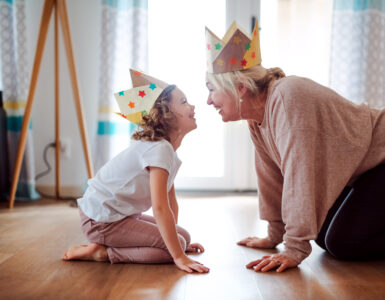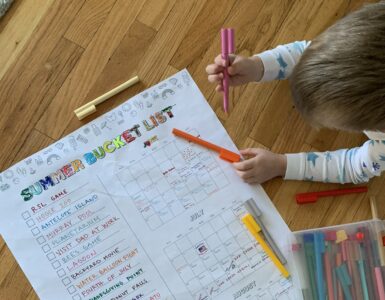Studio 5 Clinical Psychologist Dr. Liz Hale helps sort through the deception.
There are many reasons why we emotionally spend; too many to list. But the most common reasons are as follows:
• Cope with stress
• Cure the blues
• Diffuse anger/boredom
• Feel special
• Soothe or reward self
On the surface, it looks innocent enough, doesn’t it? It’s not illegal, immoral, or cancer-causing. It doesn’t involve hazardous substances, drugs, or alcohol. But there is often a financial price to pay for emotional spending which leads to an emotional price, as well. Shopping can be a release; but it’s a temporary fix. Happiness appears tangible in retail therapy; it’s in the form of new and expensive 4-inch heel stilettos, designer jeans, or the latest i-Phone. While compulsive shopping is not currently recognized as a disorder, that my soon change when the new Diagnostic and Statistical Manual of Mental Disorders is updated in 2010.
A recent study at California Institute of Technology found that the more we believe something is worth, the happier we are with our purchase. Even if you don’t drink alcohol, you’ll find the following study fascinating. Participants, hooked up to brain scan machines, were asked to take a sip of wine ranging from $5.00 to $90.00 a bottle. When they believed they were drinking from the most expensive bottle, even if the actual drink was from the $5.00 bottle, brain scans showed increased activity in the medial orbital frontal cortex, the area of the brain registering pleasure. Other brain-imaging studies have shown that for most of us, simply anticipating a purchase prompts activity in many of the same pleasure-seeking circuits that are activated when addicts find a “fix.”
What they found with wine is also likely to be true with homes, clothes, and cars. If you feel that something is worth more, it offers more meaning. Happiness, it seems, is just a purchase away. Too many times we want more than we have because we want to be more than we are – so buying more equals being more. Too often we confuse an item’s worth with our own self-worth. We race towards our next purchase inwardly questioning, “Will this make me happy?”
Happiness that follows a pricey purchase may be in part an immediate attempt to rationalize the money that is now gone. When we start to think about it: “Well, I must be worth it….right? Yes, I must be worth a lot if I’m buying such an expensive item. I’ve just proven that I’m worth every penny. I have to be!”
Sadly, it’s a fleeting pleasure. Back to the brain scan studies, the brain’s pleasure centers only reacted to the enjoyment of the pricey wine for only a few seconds past swallowing. After that, “retail joy” is gone. And so is the wine. And so is your money.
You can never get enough of what you don’t really need. “Stuff” will never meet psychological needs – we need to look elsewhere.
So how can we curb our desire/addiction to emotionally spend? I’ve come up with an acronym – CURB for easy-remembering. C stands for Curtail.
C = Curtail
One of the fastest ways to cut yourself off from emotional spending is to not carry your cash or money with you when you don’t need it. This will reduce temptation and impulse buys. If you don’t have money or a credit card with you, then you will have to come back later to buy something; a good test to see how bad you really want it.
The most dangerous emotion to shop with? Sadness. Carnegie Mellon studies how feelings from one situation spill over into spending behavior. Subjects were shown three emotion-inducing movie clips – one revolting, one depressing, one neutral, and then they were asked to estimate how much they’d be willing to spend on a certain product. The individuals who had seen the sad movie clip were willing to spend up to 4-times more than those who had been exposed to the other two clips. Misery appears to make us less miserly. The sad consumer is more likely to think less of themselves, and thus may be more motivated to boost their self-image with a pricey purchase. What situations in your life make you sad, depressed, or lonely? What else can you do with those emotions than numb them through shopping?
U = Unsubscribe
Unsubscribe to fashion magazine, car magazines or computer magazines that are full of tempting ads that tend to get you in trouble financially. Limit your exposure to advertising. Unsubscribe to the product catalogues that arrive in your mailbox, or if you’re like me and you can’t keep up with the plethora that continues to arrive in spite of asking to be removed from the mailing list, throw them away before they ever make it into your home. I make myself walk by a recycle bin between the mailbox and my front door. Gone are the cluttering catalogues and gone are my temptations to shop from home.
Stay out of the hot spots. Limit your time on the computer or watching the shopping network shoes on television. Don’t go to the mall if that’s your weakness. I remember being in college at Utah State and, while I liked parts of my freshmen year, I was terribly homesick. Have you heard the term “freshmen fifteen?” I would often make Rice Krispie treats (for my roommates, of course) like I used to make at home; only I added peanuts and M & M’s because, again, that’s what my roommates liked. My eating habits were atrocious. In long-distance phone calls home to my parents my mother would encourage me to go to the mall. Perhaps she thought I would walk up and down the mall for exercise, or get my mind off emotional eating by window shopping. Well, not only did I gain 15 pounds my freshmen year (at least) but now I had a little spending habit on top of it! I have to smile every time I wear her ring. This is the ring I bought for her when I opened an account at Zale’s around Mother’s Day that freshmen year. Not only did my mom get the ring but she also got the bill! Happy Mother’s Day!
Watch what we teach our children when we shop with them and they “neeeeeeeeeed” something! Unsubscribe to their impulse shopping. When you go to the grocery store to get certain groceries on the list, stick to the list. When they want something (or when a product catches your eye) show them it’s not on the list but that you will make a mental note that the next trip to the store may include peanut butter cups on the shopping list if it works into the budget.
R = Recognize & Record
It’s important to recognize your emotions behind the shopping sprees and record your success. Reason goes away while emotions are at play. In the moment of buying something, we might really believe the excuses we tell ourselves. I recommend “urge surfing.” Let your urge to spend rise and fall without responding to it. After the urge has passed and you re-evaluate your initial excuse, you’ll see how untrue it is.
There are a total of four steps to this process:
1) Recognize the urge.
2) Ask “What am I thinking & feeling?”
3) Choose an alternative action.
4) Record your success.
B = Balance
The point of shopping or spending is usually to bring something new into your life – beauty, companionship, relaxation, happiness. When you figure out what that “thing” is, you can find the best way to get it, which might not cost any money at all.
Breaking the spell shopping seems to cast is not as hard as people usually think. It does require work, however. We need to understand our triggers, the emotional aftermath, and what happens after the bill comes. We also need to think about our values and vision in life. Spending is harmless in small, responsible ways but it won’t absolve us of our problems.
Online Extra:
To find out if you have compulsive shopping tendencies, take this online quiz:
www.4therapy.com/consumer/assessment/taketest.php?&uniqueid=26
Dr. Liz Hale is a licensed clinical psychologist and a regular Studio 5 Contributor. Your comments and questions are welcomed! Please visit www.drlizhale.com to add your thoughts to today’s discussion or learn more about her private practice.















Add comment